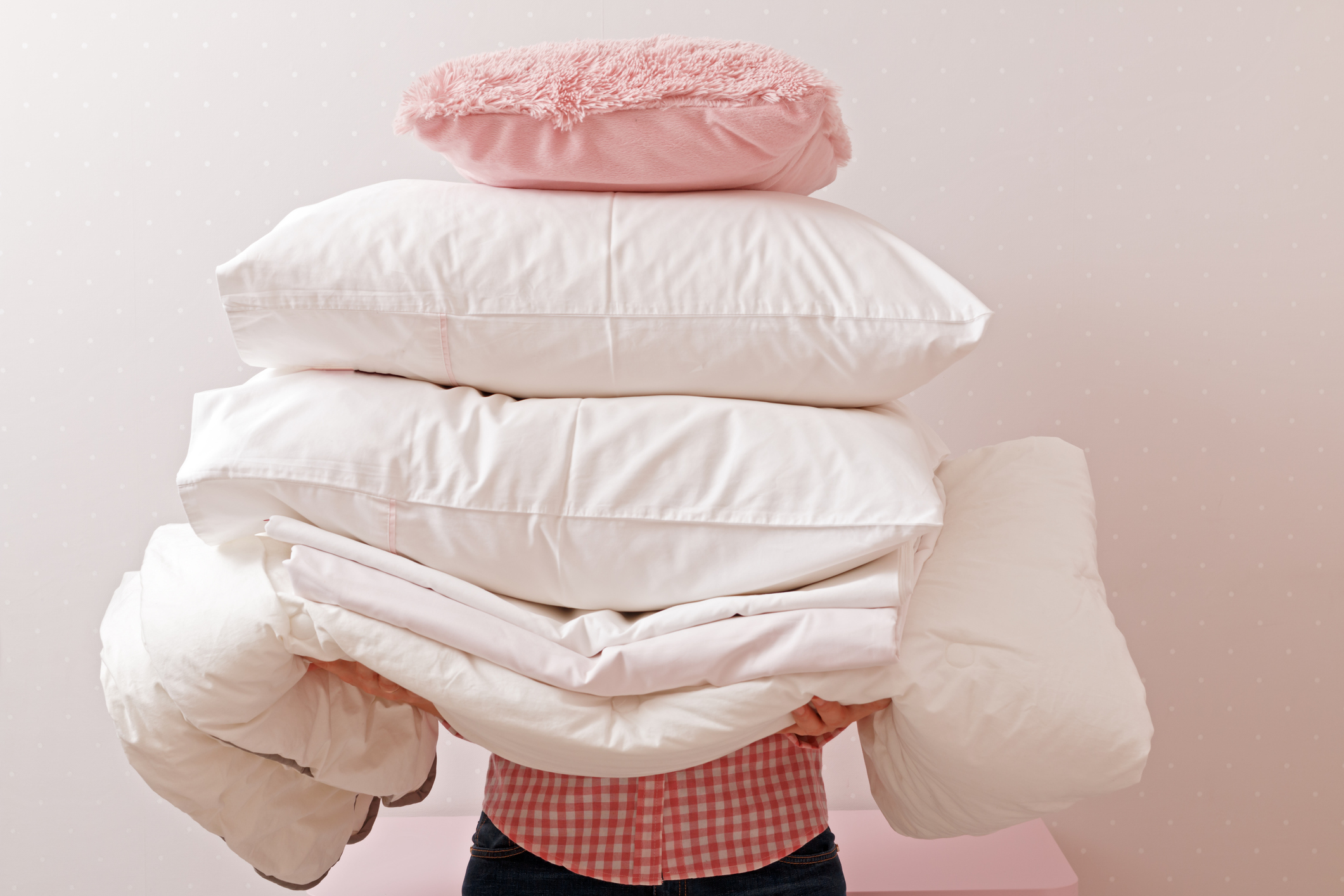Although there is much to do outdoors in the Spring – brighter days also reveal dust, dirty windows and pet hair that may be collecting in corners, vents and under furniture indoors. A deep Spring clean not only gives a home a facelift but also helps improve indoor air quality. Because we spend so much time in our beds, our bedding also needs to be regularly cleaned and the mattress vacuumed – and don’t forget to launder pillows that absorb sweat, oil, allergens and dead skin cells!
With allergy season in full swing, keeping outside pollens from collecting indoors requires extra cleaning. Often the bedroom, where we look forward to relaxing, reading, and of course sleeping, is the source of irritants that disturb rest. Washing your sheets, pillowcases, and towels weekly can help minimize allergens, and pillows should be laundered about every six months.
According to a recent article in Architectural Digest, most pillows can be cleaned in the washing machine but check the pillow’s care label to make sure you are correctly washing the item. It is usually safe to wash cotton, feather, down or fiberfill pillows in the washing machine – but don’t forget to check for any rips in the fabric that could clog your washing machine. Often cold water is advised for washing pillows to avoid shrinking the fabric.
To help balance the weight and clean most effectively, put two pillows into each load and select a higher-speed spin cycle to remove more water. Use a mild laundry detergent that won’t irritate sensitive sleepers.
Memory foam pillows are favored among people with neck problems but they usually should not be washed in the machine. Foam pillows can tear in the washer, and may be best cleaned by hand washing in the bathtub, spot treating, or vacuuming. A foam pillow usually has a removable cover under the pillowcase that can also be removed to wash, at least every three months.
Finally – the drying! Memory foam pillows must be air-dried because the foam can easily catch fire in the dryer. A drying rack in a well-ventilated area, or hanging outdoors with when the pollen count is low, will do the trick. Be sure pillows are thoroughly dry before putting them back on the bed to prevent any mildewing. Feather, down and synthetic fibre fill pillows can usually be dried in the dryer – but check the care instructions first. Wool dryer balls can help keep the fill from clumping together and fluff it up a bit as well. Avoid taking pillows to the dry cleaner which may use chemicals that could cause sensitivity or damage natural fill fibres.
To help keep pillows cleaner, and reduce seasonal allergy symptoms, don’t forget to wash any makeup or sunscreen off your face before bed. Having a bath or shower before heading to sleep can not only help you wind down after a busy day but rinsing off dust, dirt and pollen can let allergy sufferers get a better night’s sleep. Ahh…that’s better!






Add Your Voice
0 Comments
Join the Discussion